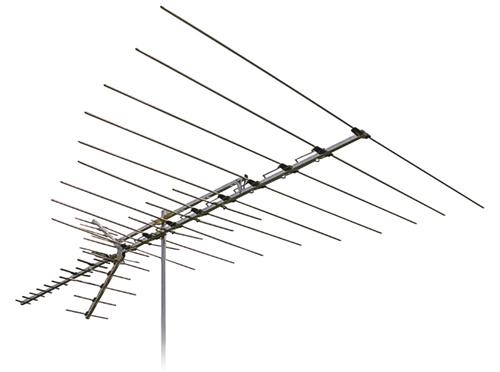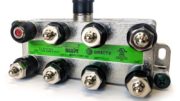The month of July is inextricably linked with the city of Philadelphia. After all, it was in July of 1776 that the Declaration of Independence was signed. Philadelphia was already a fairly old city at that time, having been founded in 1682. It’s a city that’s proud of its heritage, and slow to change. That’s a good thing if you like the food, culture, and people of Philadelphia.
But sometimes, that desire to keep things as they were can cause some problems. That’s very much true with Philadelphia’s ABC affiliate, WPVI.
A little bit about WPVI
WPVI is a legendary station. It started broadcasting in 1947 as WFIL-TV, and was the first station to sign on as an ABC network affiliate. It’s been broadcasting continuously on VHF channel 6 ever since. The number six is so ingrained in its character that the station even adopted “PVI” as its call letters. P, one must assume for Philadelphia, and VI being the Roman numeral for six.
WPVI Philadelphia is one of only a handful of stations that have been broadcasting on the same frequency since they started. Many stations took the opportunity to move the UHF band during the digital transition of 2000-2009, and even more changed frequencies during the “repack” of 2014-2019. Philadelphia’s channel 6 hasn’t moved a bit, unless you count those days when they also broadcast their digital signal on channel 62. But, they’ve never stopped broadcasting on channel 6.
Why is this a problem?
There are but a handful of stations in the US that broadcast on channels 2-6. Of all of them, Philly’s ABC station certainly is the most storied; only Boston’s famed WGBH, known to Gen-Xers as the home of “Zoom,” comes close. The other stations are doubtless important to the markets they serve, but most of those markets are small. Los Angeles has a station in that range, but it’s not a major network affiliate.
Most of use remember a time when all the major network affiliates were down on the low side of the dial. That changed when digital broadcasting came in. UHF stations require a smaller antenna, and that was seen as a major barrier to antenna adoption. So, with the help (and financial backing) of the US government, many stations moved “up the dial,” hoping to get more viewers who use antennas.
But hey, all those station numbers haven’t changed. What gives?
Part of the deal when stations moved was the introduction of PSIP. PSIP is a system built into every TV that lets you think you’re tuning to one channel when you’re actually tuning to another. It’s what lets you think you’re watching “channel 4” when that station might just be broadcasting on channel 36. That’s why you have to scan for channels when you set up a TV. It’s building that translation table for you.
WPVI is on channel 6 and they’re not going anywhere.
At this point, if WPVI wanted to broadcast on a different frequency, they’d need to build a whole new transmitter with their own money. That transmitter would cost more to operate, too. See, the higher the channel number the higher the frequency. And the higher the frequency, the more power it takes to cover the same area.
So, if you want to get channel 6 in Philly, you’ll need a big antenna. You’ll need one that’s designed to get not only VHF, but VHF-LOW. And that means unless you’re pretty close to downtown you’ll need an antenna that looks like this:

Yeah, I know this looks like your granddad’s antenna. But those big spiky elements are needed if you’re going to get channel 6. Those smaller, sexier antennas just aren’t going to cut it, once you get out past the city limits. Not in Philly, anyway.
Solid Signal can help!
Solid Signal has the best selection of VHF-Low antennas, all at the best prices. Shop SolidSignal.com today for the best selection. Not sure what you need? Fill out this form and a real antenna tech will let you know what you need!





